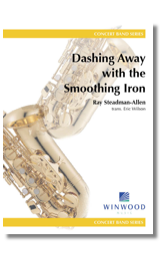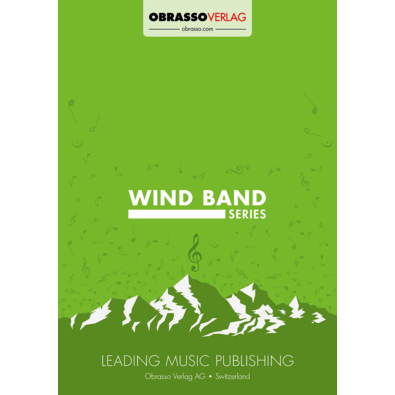Results
-
 £78.00
£78.00Dashing away with the smoothing iron - Ray Steadman-Allen
The composer writes... A lighthearted arrangement of an old folk song. The style is generally bright with a short, slower change of pace in the middle. En route there are a couple of quotations which got into the music almost unbidden: a fragment of one of Mozart's horn concerti and 'A-hunting we will go'. '... a splendid concert piece for advanced tuba players.' WINDS Autumn 2008 Duration: c.3:00 Also available with piano or brass band.
Estimated dispatch 7-14 working days
-
 £84.60
£84.60Rock Around The Clock - Max C. Freedman, Jimmy De Knight - Ray Woodfield
Estimated dispatch 7-10 working days
-
£79.00
Beautiful Dreamer - Stephen C. Foster - Michal Worek
Estimated dispatch 10-14 working days
-
£34.00
Camptown Races - Stephen C. Foster - Jérôme Naulais
Estimated dispatch 10-14 working days
-
£125.00
-
£245.00
Konzert No. 1 c-moll - Vladimir Peskin - Jan Valta
Concerto Nr. 1 C Minor
Estimated dispatch 10-14 working days
-
£125.00
My Old Kentucky Home - Stephen C. Foster - Jérôme Thomas
Estimated dispatch 10-14 working days
-
£36.00
My Old Kentucky Home - Stephen C. Foster - Jérôme Naulais
Estimated dispatch 10-14 working days
-
 £70.99
£70.99Finally Free From Smallfoot - Niall Horan, John Henry Ryan, Ian Zachary Franzino, Andrew James Haas & Julian C. Bunetta - Frank Bernaerts
Estimated dispatch 10-14 working days
-
 £49.00
£49.00Dancing Skeletons
Imagine walking through the graveyard at night and seeing three skeletons rising from the grave. Watch and listen as the skeletons do a nightly dance as the darkness surrounds them. The C minor theme begins in the low brass and low reeds as percussion - including wood block - represent the rattling bones of the dancing skeletons. Perfect for a spooky Halloween feature!
Estimated dispatch 12-14 working days
